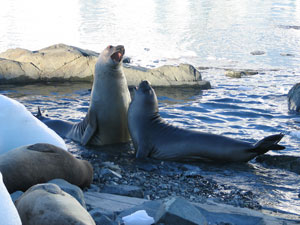Rational Function Applications
Effective Population Size
Use the equations above to answer the following questions: Find the effective population size given the number of breeding males and females. Find the number of breeding males in a population. Describe what happens to a given population as the number of breeding females increase. Determine the effective population when there are twice as many breeding males as breeding females. ***** |
||||
The Biology Project > Biomath > Rational Functions > Applications > Effective Population Size
The Biology Project
Department of Biochemistry and Molecular Biophysics
The University of Arizona
February 2007
Contact the Development Team
http://www.biology.arizona.edu
All contents copyright © 2007. All rights reserved.

